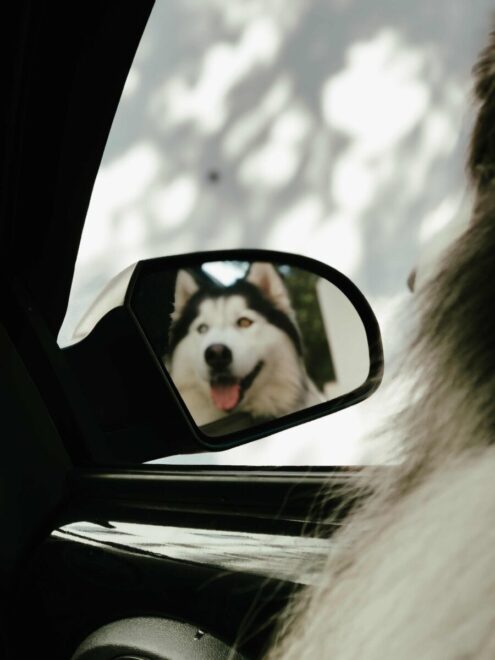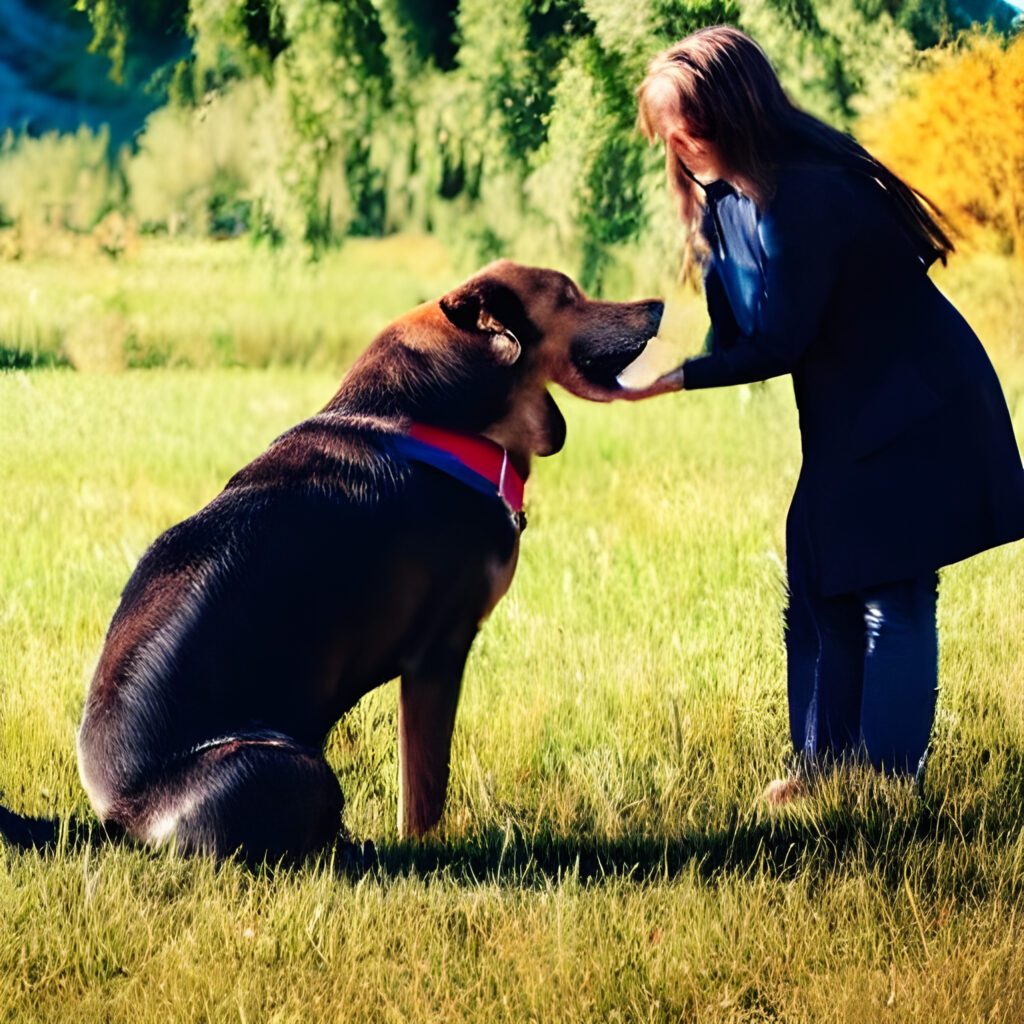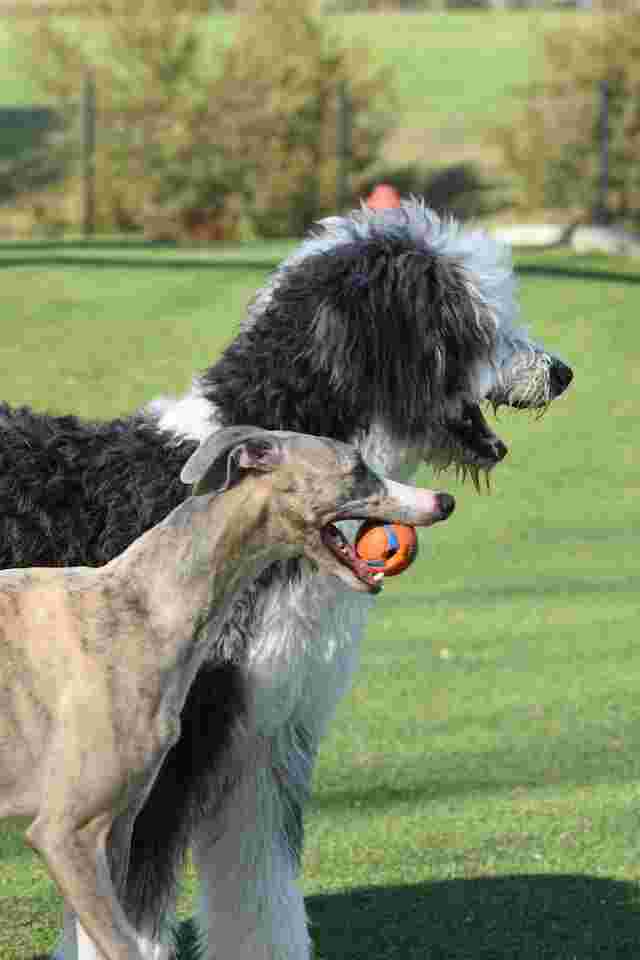
A tapestry of affection, camaraderie, and, most intriguingly, behaviors that frequently enthrall and confound pet owners is the human-canine link. One of these riddles is the mysterious image of a dog staring into a mirror, evidently enthralled with its own reflection, sometimes punctuated by the unanticipated flow of tears. This strange habit begs many questions, enticing us to delve deeply into the psychology of dogs, the complex interaction between dogs and mirrors, and the depths of canine behavior. Come along on this in-depth exploration as we dissect the intricate interactions between emotions, thought, and behavior that explain why dogs gaze into mirrors and, occasionally cry.
Table of Contents
why does my dog look in the mirror and cry.
Mirror Exam and Canine Self-Identification:

Self-awareness, which is frequently measured using the mirror test, has served as a standard for cognitive capacities in several animal species. Even though canines haven’t successfully completed this exam, our investigation will cover the complex terrain of canine cognition. We will examine the complexities of their brain processes and sensory perception, and we will consider whether the conventional mirror test is a reliable indicator of their capacity for self-recognition.
Social Hierarchy and Dogs:
Being sociable animals and descended from wolves, dogs understand the importance of social structures, dominance, and submission from an early age. In the framework of social hierarchy, this chapter will examine how a dog could perceive its own reflection. Could their responses be a result of a complicated emotional web shaped by social dynamics and their ingrained pack mentality?
Canine Emotional Intelligence:

Dogs’ exceptional capacity to recognize and react to human emotions is demonstrated by their emotional intelligence. But do dogs feel a range of emotions when it comes to their own introspection? We’ll explore the complex realm of emotions in dogs, examining if seeing their own mirror causes them to smile, get curious, become confused, or even experience intense feelings that cause them to cry.
Canine Senses Function:
Dogs use their keen senses of hearing and scent to navigate their environment. How do these heightened senses influence how we react when faced with a mirror? Our exploration traverses the complex realm of sensory perception and helps dogs interpret reflected images. and reveal unique ways of responding.
The Influence of Past Experiences:
Past experiences leave an indelible mark on a dog’s behavior. This chapter examines the effects of positive and negative mirror encounters on dogs’ subsequent responses. By examining the influence of past experiences, we hope to learn whether a dog’s history shapes its perception of its own reflection and ultimately influences its behavior today.
Health and Well-Being:
Crying is a universal expression of emotional distress or physical discomfort. Does seeing one’s own reflection in the mirror cause emotional upset in dogs, or is there a physiological explanation for the tears? This chapter discusses potential health-related factors that contribute to tear reactions in dogs. It highlights how important vigilance is to your pet’s overall health and how it relates to your pet’s behavior toward the mirror.
Training and Conditioning:

Can training and conditioning shape a dog’s response to its reflection in the mirror? This chapter explores the fascinating world of behavior change. By examining the role of owner influence and environmental factors, we aim to investigate how positive reinforcement or desensitization techniques can change a dog’s perception and response to its own reflexes over time.
Cultural Perspectives on Dogs and Mirrors:
Cultural beliefs and perspectives surrounding dogs and mirrors vary around the world. This chapter examines different cultural attitudes towards this mysterious dog behavior. From seeing them as signs of the supernatural to seeing them through a curious lens, we uncover how social beliefs contribute to the mystique surrounding dogs and mirrors.
Exploring the identity of dogs:
Do dogs know themselves? Building on the insights gathered in the previous chapters, we engage in philosophical considerations about the identity of dogs. Are dogs confident? Can her interactions with the mirror provide clues to help her understand her own identity? This chapter deals with the philosophical and existential aspects of fascinating questions such as: Do dogs recognize themselves in the mirror?
Conclusion:
Our quest to discover the mystery of why dogs shed tears has led us through the labyrinth of dog cognition, emotional intelligence, social dynamics, sensory perception, past experiences, and health. Educational and even cultural perspectives. Although definitive answers remain elusive, our depth of understanding has expanded, giving us a deeper understanding of the complex interplay of factors that shape the behavior of our canine friends. The more we share life with these extraordinary creatures, the more mysterious their behavior becomes, cementing the enduring and extraordinary bond between humans and their beloved four legged friends. It will be Through this comprehensive exploration, we hope to advance our understanding of the rich range of emotional and cognitive processes that contribute to the fascinating mystery of canine mirror gazing.
Why does my dog cry when looking in the mirror?
Dogs may cry or exhibit unusual behavior when looking in the mirror due to confusion or a lack of understanding. They might perceive their own reflection as another dog, leading to a mix of curiosity and uncertainty.
Is my dog feeling lonely when crying in front of the mirror?
While dogs are social animals, crying in front of a mirror might not necessarily indicate loneliness. It’s more likely a response to the unfamiliar sight of their own reflection, causing a range of emotions from curiosity to confusion.
Could my dog be distressed by their own reflection?
Yes, some dogs can become distressed or anxious when confronted with their reflection. The sight of another dog that seems to mimic their movements might be perplexing, leading to vocalization or crying as a way to express discomfort

One Reply to “why does my dog look in the mirror and cry. Discover Why Dogs look in the car mirror and tear up.”